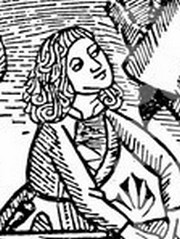The word [cathedra] is Greek, from [καθέδρα] meaning "a high chair", a "teacher's chair" or a "throne". The term was later accepted into Latin with the same meaning.
In the early pre-Vesalian days of anatomy, the teachers would seat in a high-chair or cathedra from where they would read the anatomy from a book while a prosector or demonstrator would dissect, expose and point to the structures. The professor would not consider coming down from the cathedra to discuss the anatomy shown. This was changed by Andreas Vesalius who did the dissections and demonstrations himself, using the books as reference or to prove a point.
The term cathedra has been brought to our times, where we refer to the position at the head of a group as the "Chair": Chair of the Science Department, Chair of Surgery, etc.
The word cathedra was used to refer to a Bishop's chair in a church, so that large churches (which had a bishop) are now known as [cathedrals]. It is also said that someone of authority speaking in uncontestable terms is speaking ex-cathedra (from the chair)
In other languages the term "cathedratic" means a teacher in a high position, while in English the term refers to a Bishop speaking from the chair.
The image in this article is a close up of the title page of Mondino de Luzzi’s “Anothomia Corporis Humani” published in 1478. The person on the image could be Alessandra Giliani (1307 - 1326) who is at the foot of the cathedra following the directions of Mondino de Luzzi. Click on the image for a complete depiction of the title page.
Original image courtesy of NLM




